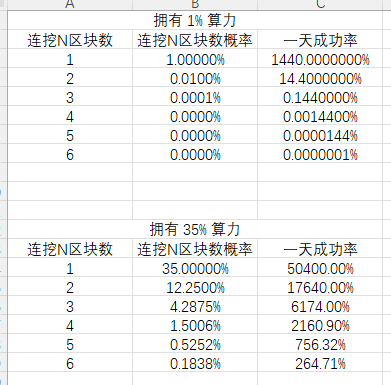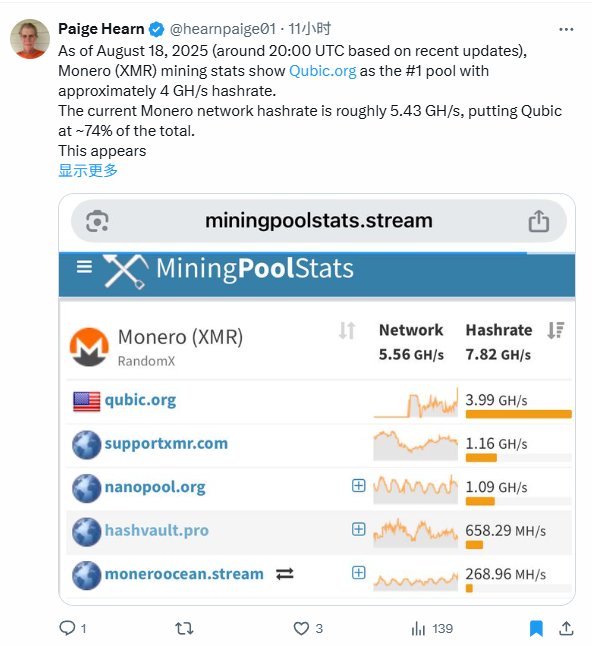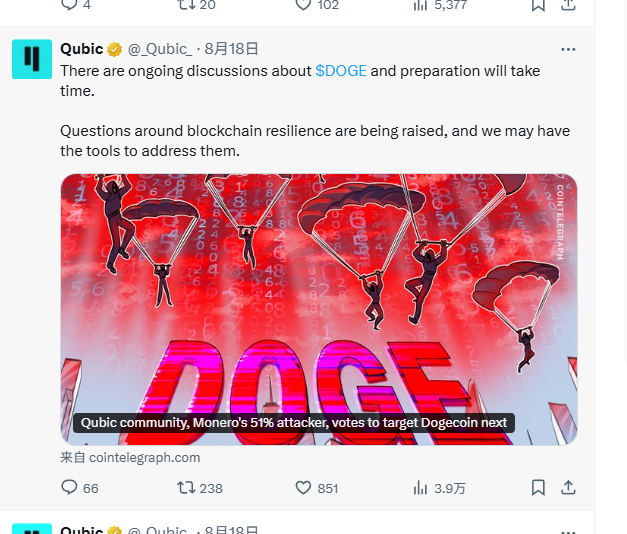Author: 0xTodd
The recent so-called "51% attack" on Monero (XMR) initiated by Qubic is, in fact, a carefully orchestrated psychological warfare and publicity strategy, rather than a genuine power takeover. The community's review has revealed:
During the attack, Qubic's actual hash power was only about 35%, not the claimed 51%. However, by employing "selfish mining" techniques, they managed to mine 6 blocks in succession, briefly forming the longest chain, which could potentially invalidate honest miners' blocks, creating the theoretical conditions for a double-spend attack.
This attack is essentially a form of deterrence: by showcasing potential attack capabilities, it lures miners to join the Qubic pool out of economic considerations, leading to a real hash power exceeding 50% afterward, resulting in a backlash effect.
Qubic did not actually execute any double-spend operations (as exchanges require 10 confirmations for deposits), and the attack relied on probability and temporary hash power leasing, serving more as psychological pressure and market promotion.
The project team has claimed that their next target is Dogecoin, but analysis suggests that due to its reliance on ASIC miners, the difficulty of such an attack is relatively high, and the current statement may still be part of the psychological warfare.
The entire incident is seen as a classic case of "Fake it till you make it," highlighting the actual influence that the combination of public opinion manipulation and hash power display can have in the crypto space.
Some follow-ups: Amazing, this is psychological warfare. Since last week when $XMR was publicly announced to be under a 51% attack by Qubic, the community has drawn several conclusions:
Qubic did not actually possess 51% of the hash power during the so-called 51% attack last week; they only temporarily reached around 35%.
Qubic mined 6 XMR blocks in succession, suspected to be selfish mining.
Selfish mining refers to the practice of mining blocks but withholding them from public release until accumulating six, at which point they are revealed all at once to form the longest chain. This causes the honest miners' 5 blocks (the second longest chain) to become invalid, achieving a double-spend.

PS: I roughly sketched a diagram for clarity.
In fact, even if I only had 1% of the hash power, I could theoretically mine 6 blocks in succession, although the probability would be very low, while 35% hash power has a significantly higher probability.
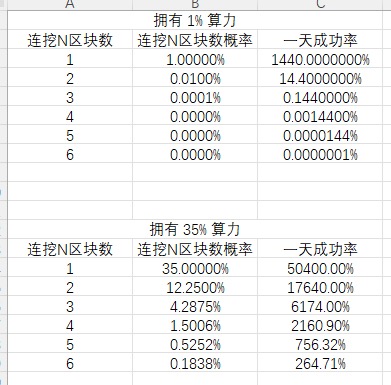
I did a simple calculation. This is just natural probability; given that Monero has 1440 blocks per day, with 35% hash power, the mathematical expectation is that an attack could succeed about 2.6 times a day.
This does not even account for the boost from selfish mining, which would make it even higher; otherwise, Qubic might not be willing to spend money to temporarily lease hash power to impact 6 blocks.
Why is this model called selfish? Because when withholding blocks, to ensure success, they often do not include transactions, resulting in many empty blocks, wasting block space.
Back to the main point, Qubic also did not execute any double-spend; many exchanges require 10 block confirmations for XMR deposits, so they had no real incentive to attack.
Thus, you can understand that Qubic neither had 51% hash power nor executed a 51% attack; they merely showcased their muscle and then issued a press release claiming to have completed a 51% attack.
But why is it called psychological warfare? Because once the incident occurred, many miners surprisingly surrendered and actually joined the Qubic pool, leading to Qubic's hash power genuinely exceeding 50% as of yesterday.
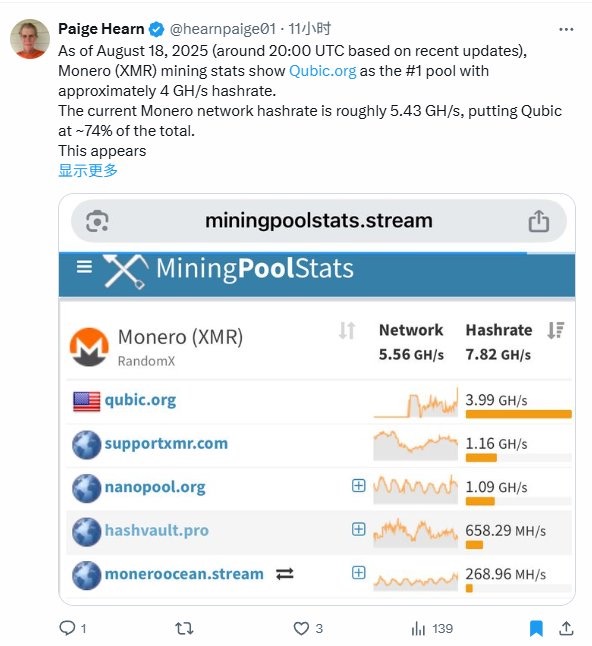
So this is not a hash power battle, but a psychological battle.
This is a form of deterrence against miners—if you do not join the Qubic pool, the blocks you mine in the future may become invalid, affecting your yield; if you join, although it means aiding the oppressor, not only will you incur losses, but even double-mining miners are not all hard-headed; many still consider the economic implications.
Immediately after, they announced that their next target is Dogecoin. However, I believe that Dogecoin is based on Litecoin miners, which have ASICs, making it not so simple. But they are experts in psychological warfare. So this announcement itself may be a new form of psychological warfare.
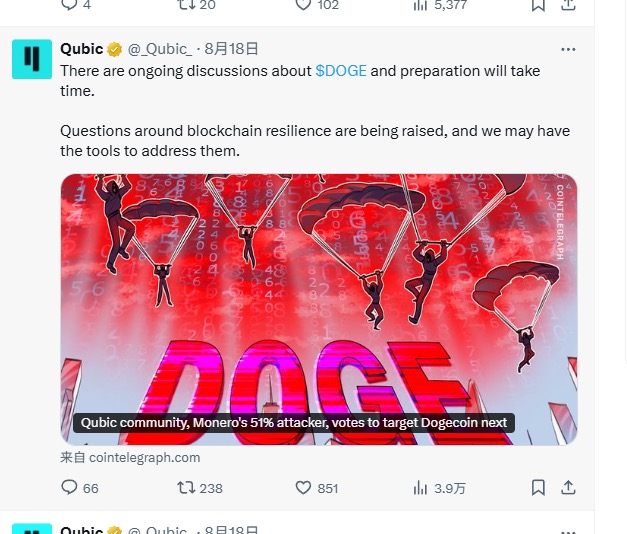
Breathtaking, this is called "Fake it till you make it," which is hard to translate; a literal translation would be: "Pretend to blow it up until it becomes real."
免责声明:本文章仅代表作者个人观点,不代表本平台的立场和观点。本文章仅供信息分享,不构成对任何人的任何投资建议。用户与作者之间的任何争议,与本平台无关。如网页中刊载的文章或图片涉及侵权,请提供相关的权利证明和身份证明发送邮件到support@aicoin.com,本平台相关工作人员将会进行核查。

